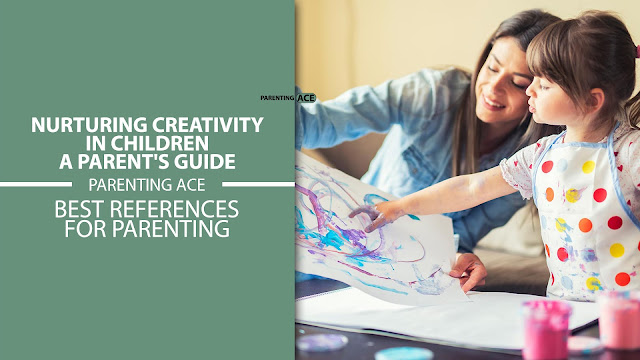Fostering Creativity and Imagination in Children: A Guide for Parents
Unlocking the boundless creativity and imagination within our children is not just a task; it's a profound opportunity to shape their futures. In this blog post, we embark on a journey to explore how parents can cultivate these essential qualities in their children. From fostering a playful environment to embracing failure as a stepping stone to innovation, join us as we delve into practical strategies and insights aimed at nurturing creativity and imagination, laying the foundation for a lifetime of limitless possibilities.
 |
| Nurturing Creativity in Children: A Parent's Guide |
How Do Parents Foster Creativity And Imagination In Their Children?
Creativity and imagination are essential skills that empower children to think outside the box, explore new ideas, and solve problems innovatively. As parents, nurturing these qualities in our children is crucial for their overall development and future success. In this article, we will explore effective strategies parents can employ to foster creativity and imagination in their children, laying the groundwork for a lifetime of innovation and original thinking.
Exploring Creativity and Imagination
Creativity and imagination are intertwined concepts that involve the ability to generate new ideas, concepts, and associations, as well as the capacity to envision possibilities beyond the present reality. While some children may naturally exhibit these traits, others may need encouragement and support from their parents to unlock their creative potential.
Encouraging Play and Exploration
Play is the primary vehicle through which children explore the world around them and express their imagination. Parents can support creativity by providing ample opportunities for unstructured play, both indoors and outdoors. This can include activities such as building forts, engaging in imaginative role-play, or creating art with various materials. By allowing children to follow their interests and explore their curiosity, parents can help cultivate a fertile ground for creativity to flourish.
Embracing Mistakes and Failure
In the pursuit of creativity, it is essential for children to feel comfortable taking risks and making mistakes. Parents can foster a positive attitude towards failure by reframing mistakes as opportunities for learning and growth. Encouraging children to experiment, try new things, and embrace uncertainty can help them develop resilience and confidence in their creative abilities.
Providing Tools and Resources
Access to a diverse range of tools and resources can inspire creativity and imagination in children. Parents can create an environment rich in materials such as art supplies, books, building blocks, and musical instruments, allowing children to explore different forms of expression and creativity. Additionally, exposing children to a variety of cultural experiences, such as visits to museums, concerts, and nature outings, can broaden their perspectives and stimulate their imagination.
Nurturing Curiosity and Wonder
Curiosity is the fuel that drives creativity and imagination. Parents can foster curiosity by encouraging questioning, sparking discussions, and actively engaging with their children's interests. Taking the time to listen to children's ideas, asking open-ended questions, and encouraging them to explore their own answers can ignite a sense of wonder and curiosity about the world around them.
Fostering creativity and imagination in children is a rewarding journey that requires patience, encouragement, and an open-minded approach. By providing opportunities for play and exploration, embracing mistakes and failure, providing tools and resources, and nurturing curiosity and wonder, parents can empower their children to become creative thinkers and innovators. Together, let us inspire the next generation to dream big, think creatively, and shape a brighter future for us all.



Comments
Post a Comment